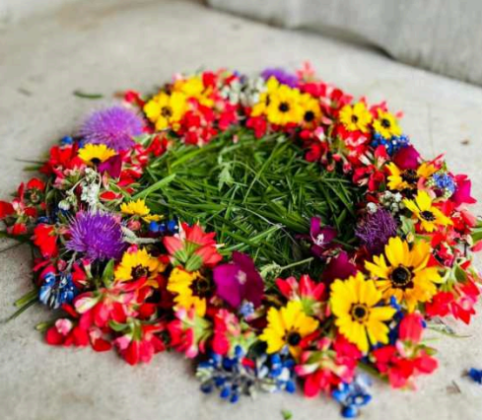The origin of the Easter bunny, nest, basket
This past Sunday, Christians around the world celebrated Easter and Resurrection of Christ as many attended church services followed by family gatherings.
Easter marks the triumphant victory of Jesus Christ over death and the grave, and His power to conquer sin and offer eternal life to all who believe in Him.
We celebrate Easter because not only did our Lord conquer death, but without the Resurrection, we have no foundation for our faith.
Easter brought an end to the Lenten season and is considered a time of rebirth.
As the years have gone by, a number of traditions have developed, which are now associated with the Easter season.
These traditions of the Easter Bunny, basket and nests, symbolize Easter and also bring joy to children.
Because it represents the rejuvenation and fertility of springtime, the idea of an egg-laying hare, or bunny, came to the United States in the 18th century. According to folk lore, Protestant German immigrants, in the Pennsylvania Dutch area, would tell their children about the “Osterhase”, which meant “hare”. As a result, the “Easter Bunny” bunny, or hare, became a symbol of Easter.
In an article written by Keva Boardman, a German descendant, she wrote legend has it that the Easter bunny came from a story written by Duchess Rosalinda von Lindenberg.
Boardman wrote that von Lindenberg was forced to flee from war with her children and during Easter would treat her children to a special treat.
According to Boardman, von Lindenberg’s treat included a nest made of moss and flowers and she would place colored hard-boiled eggs in the nest for the children.
As the folklore goes, the children would question how chickens could lay colored eggs and von Lindenberg responded after seeing a wild hare jump from the bushes that it must have brought the eggs to the nest. The tradition of the Easter Bunny was born.
Regarding the nests, on the Saturday before Easter children would go into fields to pick green grass and various wild flowers to shape a nest for the anticipation of a visit from the Easter Bunny.
On Easter morning, when the children awoke, they would find the nest filled with brightly colored boiled eggs, along with chocolate rabbits and eggs.
The basket has also become a symbol due to Christians bringing a basket containing Easter foods to church on Holy Saturday to be blessed.
Generally, the basket would contain a mixture of meats, eggs, breads and other foods that are considered a celebration of the Resurrection of Jesus after 40 days of Lenten sacrifice.
The baskets are lined with a white cloth and decorated with flowers and greenery and symbolizes the Christian narrative of the resurrection of Jesus Christ nature and the rebirth of the spring.
Christians believe that Jesus was resurrected from the dead, bringing n e w life to the world All of these symbols h a v e been passed down through the years and the bun- ny, eggs, nests and baskets continue to remain part of the Easter traditions.


